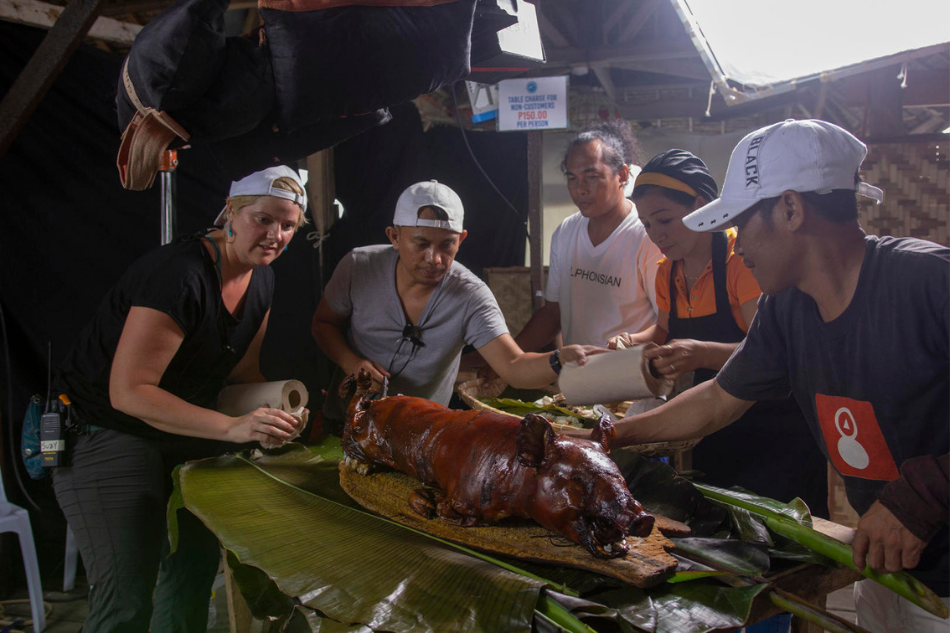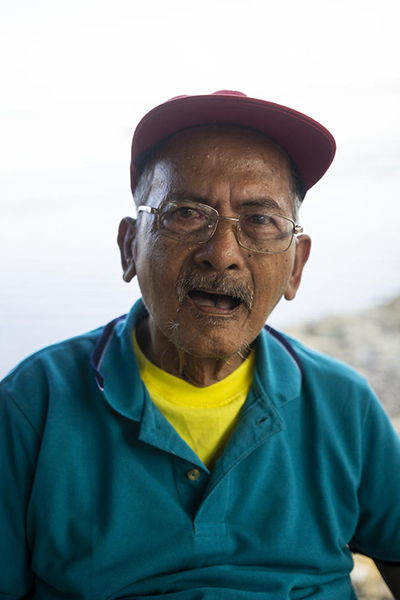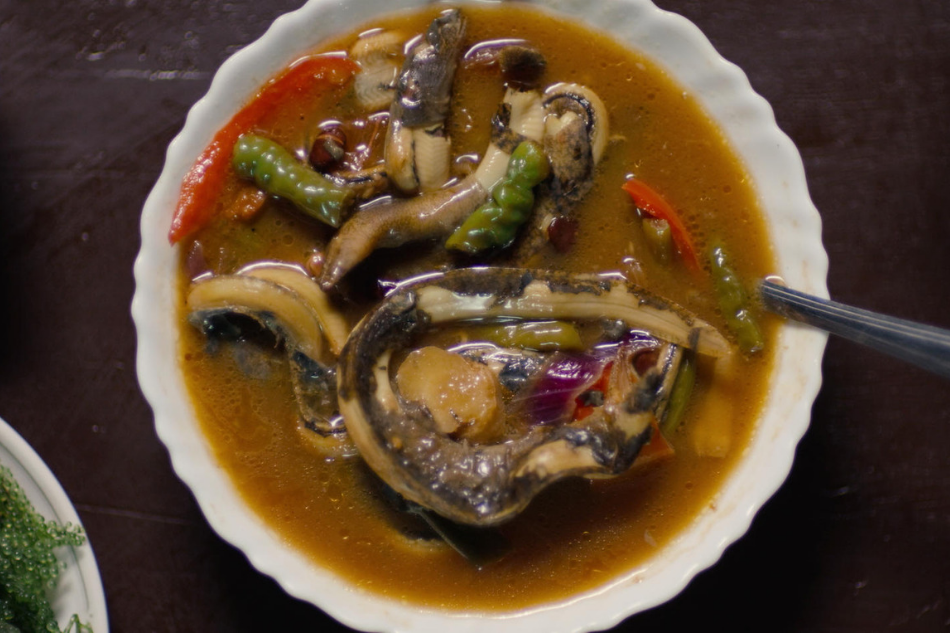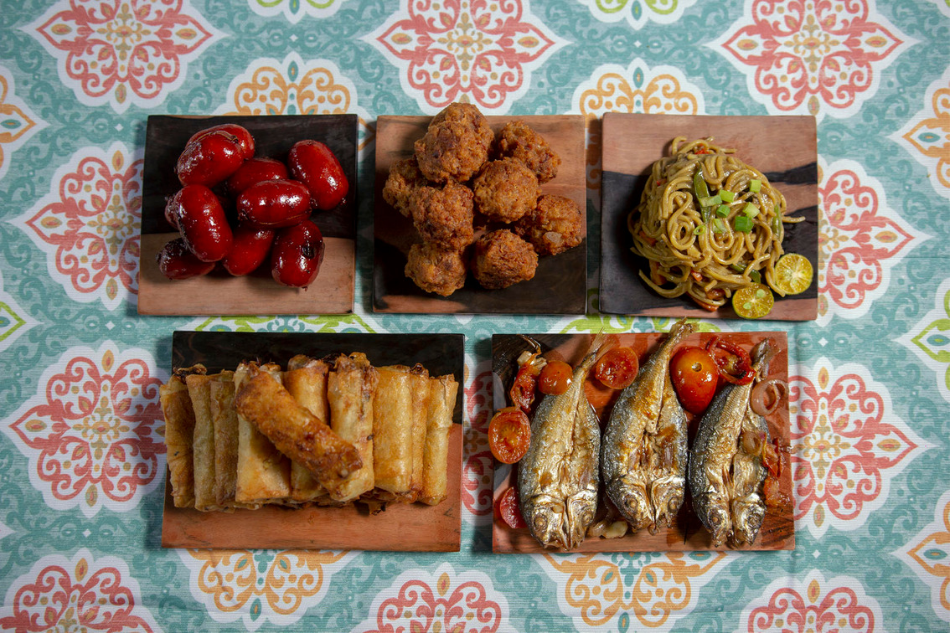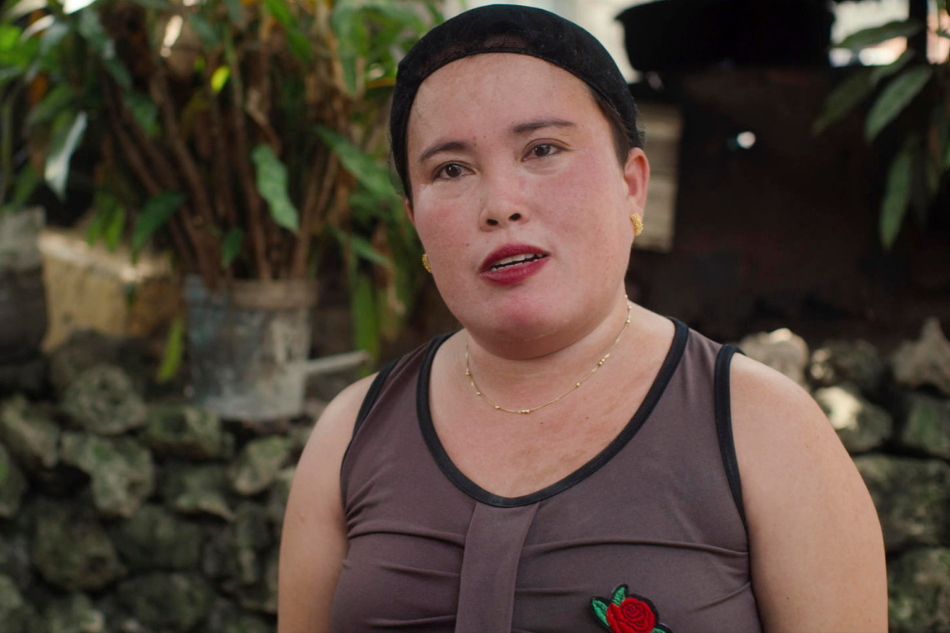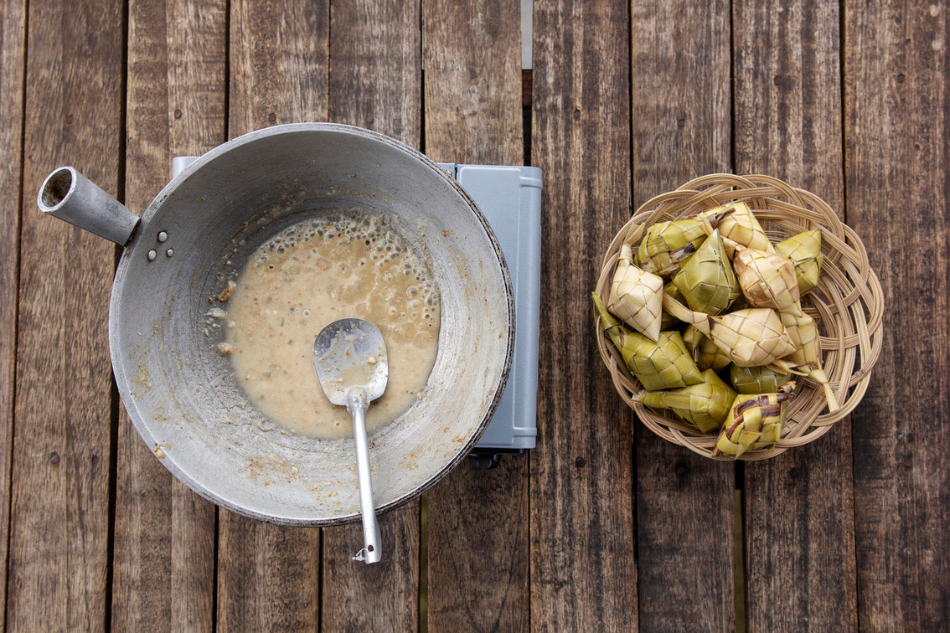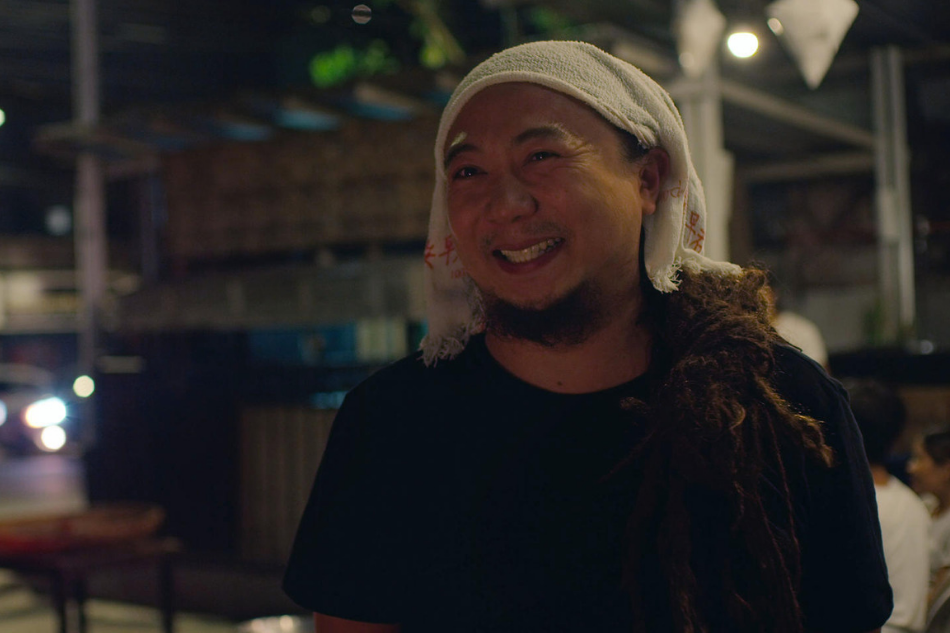What really happened behind the scenes of Netflix's 'Street Food' episode on Cebu | ABS-CBN

Welcome, Kapamilya! We use cookies to improve your browsing experience. Continuing to use this site means you agree to our use of cookies. Tell me more!
What really happened behind the scenes of Netflix's 'Street Food' episode on Cebu
What really happened behind the scenes of Netflix's 'Street Food' episode on Cebu
Maricris B. Encarnacion
Published May 02, 2019 05:47 PM PHT
|
Updated May 02, 2019 05:58 PM PHT
The Netflix series titled Street Food started streaming on April 26. Season one explores nine countries in Asia, including the Philippines, particularly Cebu featured on Episode 9. The American producers of the series are the same ones behind Chef’s Table, the award-winning Netflix series that focuses on fine dining and tasting menus. In Street Food, they take the opposite direction, choosing to feature casual dining, food carts, hawker stalls, and in the case of the Philippines, carenderias.
The Netflix series titled Street Food started streaming on April 26. Season one explores nine countries in Asia, including the Philippines, particularly Cebu featured on Episode 9. The American producers of the series are the same ones behind Chef’s Table, the award-winning Netflix series that focuses on fine dining and tasting menus. In Street Food, they take the opposite direction, choosing to feature casual dining, food carts, hawker stalls, and in the case of the Philippines, carenderias.
You may also like:
You may also like:
While the title of the series suggests that it is about the food, Street Food actually is more about the people behind the food—the culture, the struggle, the history behind their small businesses. The Cebu episode featured four street food vendors—Florencio “Entoy” Escabas for his nilarang na bakasi, Rubilyn Manayon for her vegetable lumpia, Leslie Enjambre for Talisay lechon, and Ian Lim Sekong for tuslob buwa—with annotations by Chef Myke Sarthou and Jude Bacalso. It is, first and foremost, a human-interest story about four largely unknown individuals. And therein lies the current raging debate on social media.
While the title of the series suggests that it is about the food, Street Food actually is more about the people behind the food—the culture, the struggle, the history behind their small businesses. The Cebu episode featured four street food vendors—Florencio “Entoy” Escabas for his nilarang na bakasi, Rubilyn Manayon for her vegetable lumpia, Leslie Enjambre for Talisay lechon, and Ian Lim Sekong for tuslob buwa—with annotations by Chef Myke Sarthou and Jude Bacalso. It is, first and foremost, a human-interest story about four largely unknown individuals. And therein lies the current raging debate on social media.
When I saw this final list, I immediately thought to myself, “This is going to get some flak from Cebuanos!” With the exception of lechon, it didn’t include popular street food. True enough, there was some negative buzz along with the good. But comments were on an even keel, mostly polite protests. That is, until the director Erik Matti slammed the feature on his social media page. Then the debate started becoming emotional.
When I saw this final list, I immediately thought to myself, “This is going to get some flak from Cebuanos!” With the exception of lechon, it didn’t include popular street food. True enough, there was some negative buzz along with the good. But comments were on an even keel, mostly polite protests. That is, until the director Erik Matti slammed the feature on his social media page. Then the debate started becoming emotional.
ADVERTISEMENT
I, for one, was unhappy about his declaration attributing what he considered a terrible episode on bad research. He wrote on his Instagram page, "All the other Asian countries had their classic world-renowned street food while we had...bizarre. Bad research. There are hundreds of original Filipino street food and they chose to show an esoteric eel dish and a goddamn Chinese fried vegetable lumpia! Whada₱@ck!” He drew a conclusion without knowing what really went on behind the scenes and he obviously didn’t get it.
I, for one, was unhappy about his declaration attributing what he considered a terrible episode on bad research. He wrote on his Instagram page, "All the other Asian countries had their classic world-renowned street food while we had...bizarre. Bad research. There are hundreds of original Filipino street food and they chose to show an esoteric eel dish and a goddamn Chinese fried vegetable lumpia! Whada₱@ck!” He drew a conclusion without knowing what really went on behind the scenes and he obviously didn’t get it.
Research by the American producers began around the first quarter of 2018, where they pored over material on Philippine street food available on the internet. They got in touch directly with people that could provide information and assistance during the research phase of production and subsequently, the actual filming on location. Their original research explored iconic street food in the entire country, leading them to Claude Tayag, celebrity chef and author of Linamnam: Eating One’s Way Around the Philippines. They eventually zeroed in on Cebu.
Research by the American producers began around the first quarter of 2018, where they pored over material on Philippine street food available on the internet. They got in touch directly with people that could provide information and assistance during the research phase of production and subsequently, the actual filming on location. Their original research explored iconic street food in the entire country, leading them to Claude Tayag, celebrity chef and author of Linamnam: Eating One’s Way Around the Philippines. They eventually zeroed in on Cebu.
I was then introduced by Claude Tayag to Ruby Olm, Associate Producer of Boardwalk Pictures, citing that I was his primary resource in finding his Cebu choices for the book and that I was the publisher/editor of the defunct freezine WhereAt Cebu. We had a series of email exchanges and video chats where we discussed the different street food that are popular and ubiquitous in the streets of Cebu. They also expressed an interest on those that bordered on the exotic, the relatively unknown waiting to be discovered, beyond the bizarre balut that keeps popping up on people’s feed as an adventurous bite of Filipino food.
I was then introduced by Claude Tayag to Ruby Olm, Associate Producer of Boardwalk Pictures, citing that I was his primary resource in finding his Cebu choices for the book and that I was the publisher/editor of the defunct freezine WhereAt Cebu. We had a series of email exchanges and video chats where we discussed the different street food that are popular and ubiquitous in the streets of Cebu. They also expressed an interest on those that bordered on the exotic, the relatively unknown waiting to be discovered, beyond the bizarre balut that keeps popping up on people’s feed as an adventurous bite of Filipino food.
All throughout the question-and-answer phase, they made it clear that they were looking for street food chefs, vendors, cooks that were preparing quality Filipino street food; those that had an interesting personality or story to tell. It wasn’t going to be simply about the food.
All throughout the question-and-answer phase, they made it clear that they were looking for street food chefs, vendors, cooks that were preparing quality Filipino street food; those that had an interesting personality or story to tell. It wasn’t going to be simply about the food.
By September 2018, the Filipino production team led by Johanna Lagman of Mandala Video and Event Productions was in Cebu for the final phase of research. A shortlist of 21 possible features that included BBQ, lechon, bakasi, boneless lechon, SUTUKIL, ngohiong, chicharon, tuslob buwa, and pochero was whittled further down to ten. Many of the personalities were too shy to face the camera, refusing to be included in the film, insisting that only their food be featured. Given that the episode was intended to tell the story of the people behind the food, they had to be stricken off the list.
By September 2018, the Filipino production team led by Johanna Lagman of Mandala Video and Event Productions was in Cebu for the final phase of research. A shortlist of 21 possible features that included BBQ, lechon, bakasi, boneless lechon, SUTUKIL, ngohiong, chicharon, tuslob buwa, and pochero was whittled further down to ten. Many of the personalities were too shy to face the camera, refusing to be included in the film, insisting that only their food be featured. Given that the episode was intended to tell the story of the people behind the food, they had to be stricken off the list.
Time constraints, limitations, and unexpected circumstances during the actual filming by the American crew made changes in the final choices necessary. The vegetable lumpia of Rubilyn Manayon was a last-minute serendipitous addition. Her stall just happened to be along the way from Cebu City to Entoy’s Bakasihan. The film crew stopped for some lumpia, enjoyed it, met Rubilyn, whose disposition is like sunshine, and producer Suzy Beck decided to include her story. It was pure luck for her. Her five-peso vegetable lumpia is now seeing unprecedented demand.
Time constraints, limitations, and unexpected circumstances during the actual filming by the American crew made changes in the final choices necessary. The vegetable lumpia of Rubilyn Manayon was a last-minute serendipitous addition. Her stall just happened to be along the way from Cebu City to Entoy’s Bakasihan. The film crew stopped for some lumpia, enjoyed it, met Rubilyn, whose disposition is like sunshine, and producer Suzy Beck decided to include her story. It was pure luck for her. Her five-peso vegetable lumpia is now seeing unprecedented demand.
Some are puzzled as to Cebu being the choice of location, thinking why not mega Manila or bastions of Philippine cuisine like Pampanga or Negros. The reason was simple—logistics. I hate to disappoint, but no, Cebu was not singled out because there was someone in particular that needed to be part of the story, nor was there any dish that the producers thought they could build a story on. (Although Cebu lechon did make a strong argument as a great potential story.) Cebu just seemed to be easier to manage, production-wise. They had 5 actual shoot days and they anticipated that traffic in Manila wouldn’t allow them to complete filming within the time they had. It didn’t turn out to be quite so simple after all for the American producers and crew. They didn’t anticipate the breadth of material available, and so the struggle to whittle down the list to four out of over a dozen was real. They fell in love with Entoy, his story, and that his place made for good cinematography; and thus, he became the center of the feature.
Some are puzzled as to Cebu being the choice of location, thinking why not mega Manila or bastions of Philippine cuisine like Pampanga or Negros. The reason was simple—logistics. I hate to disappoint, but no, Cebu was not singled out because there was someone in particular that needed to be part of the story, nor was there any dish that the producers thought they could build a story on. (Although Cebu lechon did make a strong argument as a great potential story.) Cebu just seemed to be easier to manage, production-wise. They had 5 actual shoot days and they anticipated that traffic in Manila wouldn’t allow them to complete filming within the time they had. It didn’t turn out to be quite so simple after all for the American producers and crew. They didn’t anticipate the breadth of material available, and so the struggle to whittle down the list to four out of over a dozen was real. They fell in love with Entoy, his story, and that his place made for good cinematography; and thus, he became the center of the feature.
We may not agree with what the producers thought was best, but in the end, it was their choice and their story to tell. Erik Matti succeeded in getting a rise from netizens from both sides of the fence. Whatever position we’re in, we need to get our heads out from between our legs and look at the Netflix Street Food, Cebu, Philippines episode from the point of view of the American story teller. They tell a tale of struggle and success. Let us appreciate and be touched by Entoy’s story. My San Francisco, CA-based niece Robin Nuñez sent me her reaction immediately after she watched it. She got it and gushed, “It made me cry! Soo good!!! I understand what you mean it’s not totally only about the food. Entoy’s story, I love his story and hopes and dreams and how he said he contributed to his community in his own little way. Very heartwarming (but now CJ and I are hungry.)”
We may not agree with what the producers thought was best, but in the end, it was their choice and their story to tell. Erik Matti succeeded in getting a rise from netizens from both sides of the fence. Whatever position we’re in, we need to get our heads out from between our legs and look at the Netflix Street Food, Cebu, Philippines episode from the point of view of the American story teller. They tell a tale of struggle and success. Let us appreciate and be touched by Entoy’s story. My San Francisco, CA-based niece Robin Nuñez sent me her reaction immediately after she watched it. She got it and gushed, “It made me cry! Soo good!!! I understand what you mean it’s not totally only about the food. Entoy’s story, I love his story and hopes and dreams and how he said he contributed to his community in his own little way. Very heartwarming (but now CJ and I are hungry.)”
Photographs courtesy of Netflix
Read More:
ancx
anc-x
ancx.ph
anc
abs-cbn
food and drink
features
netflix
street food
Florencio “Entoy” Escabas
ADVERTISEMENT
ADVERTISEMENT


